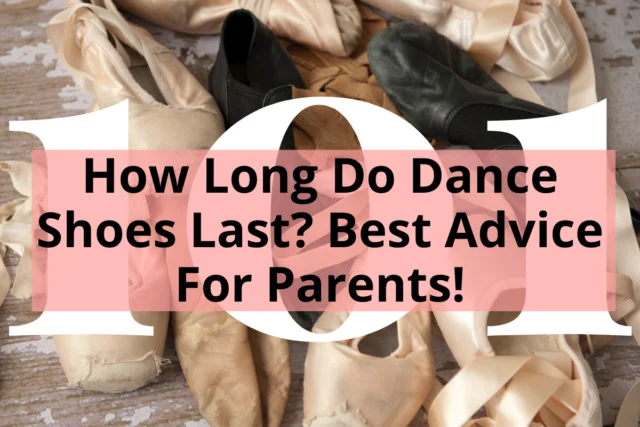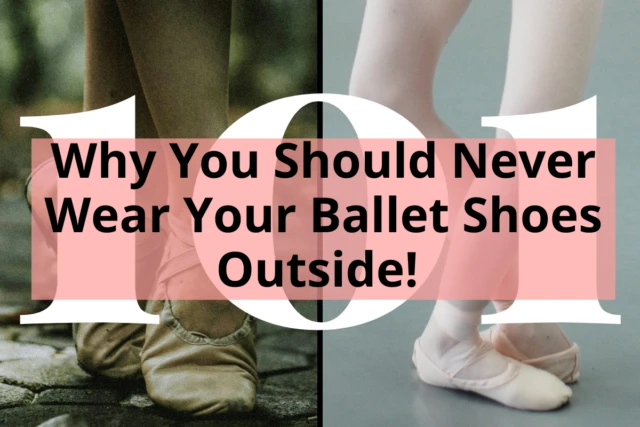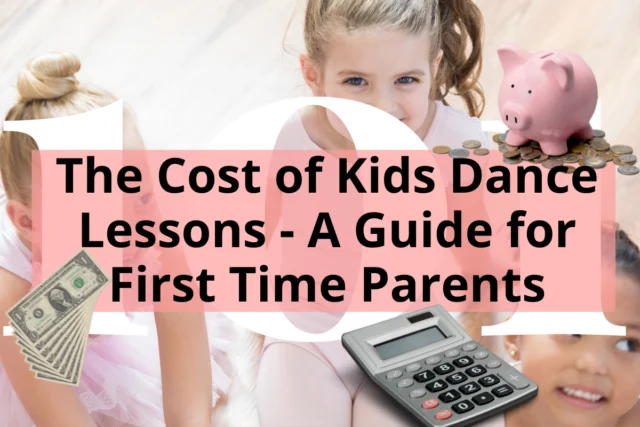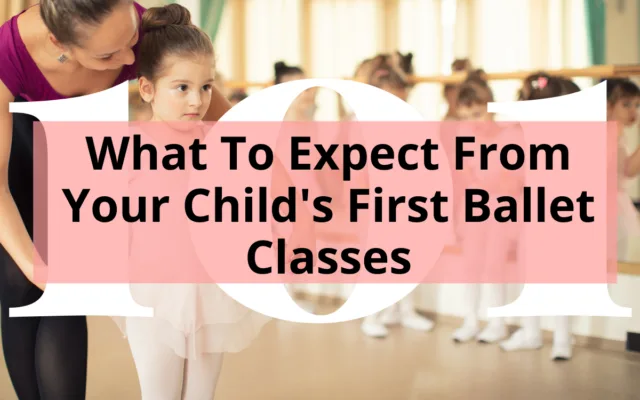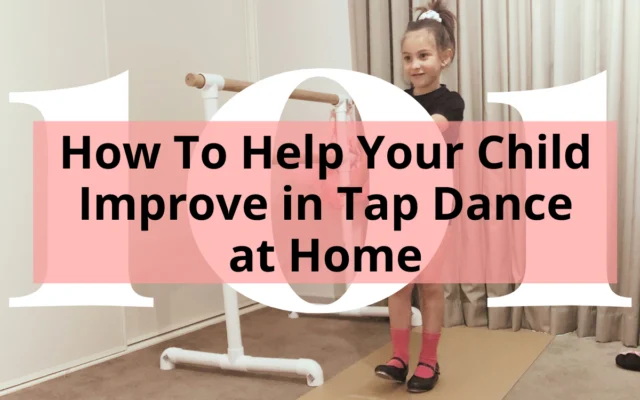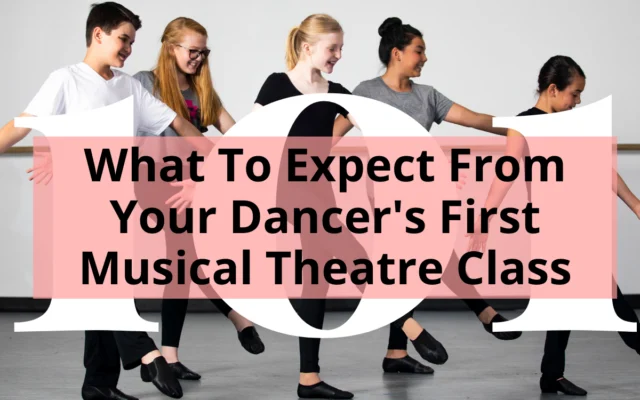By Lesley Mealor / Edited by Samantha Bellerose, B.Ed, Dip.Dance (Performing Arts)
Tap dance is making a comeback lately, with movies like “Happy Feet”, tap being featured on popular shows like “So You Think You Can Dance”, and viral videos from tap artists such as Syncopated Ladies. With its origins in African and Irish cultures, tap dance evolved into a unique art form that is beloved all over the world, and you can find classes for all ages and levels at dance studios.
In a beginner level tap class, dancers will learn a variety of steps that focus on timing, musicality, and rhythm. Most tap classes follow a similar structure including a warm-up, across the floor progressions, and a center combination.
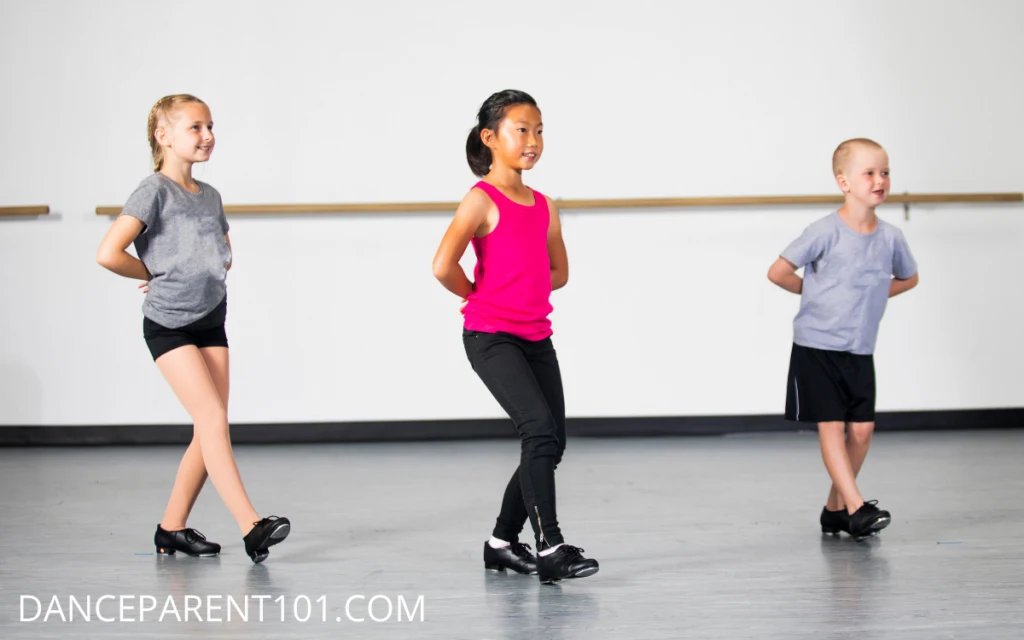
Because of the wide variety of styles of dance offered at studios around the world, it’s handy to do some research if you’ve never set foot into a dance studio. Tap dance is an excellent choice for dancers of all ages, and once you know a little more about what to expect from a tap class, you can register your dancer with confidence that they’ll love it!
- Why Choose Tap Dance?
- How Old Does My Child Have To Be To Start Taking Tap Dance?
- How is A Tap Class Structured?
- What Steps Should My Child Be Learning in a Beginner Tap Class?
- What Shoes Should My Child Wear to Tap Class?
- What Clothing Should My Child Wear to Tap Class?
- Other Articles You May Be Interested in Reading
Why Choose Tap Dance?
If your child has boundless energy and loves to make noise, tap class might be the right choice! Tap dance is a favorite among kids because of the special shoes (who wouldn’t want to make noise with every step?), the fun music, and the challenge of the steps.
Aside from how fun it is, tap dance is one of the best styles to help develop musicality, rhythm, and timing. If your child already has good rhythm, tap class will add to their skill set by providing more opportunities to practice keeping time and understanding different rhythm patterns.
Alternately, if your child can’t clap on the beat, tap class can help them develop a sense of rhythm. For beginners of all ages, tap class proves to be the thing that helps them find their inner musicality.
How Old Does My Child Have To Be To Start Taking Tap Dance?

Tap classes are often offered at dance studios for children as young as 2.5 as a part of a combination class, or “combo” class, which includes 30 minutes each of several styles of dance.
For example, a ballet/tap combo class for toddlers will be 30 minutes of ballet and 30 minutes of tap. The reason for this is to give an introduction to each style that isn’t overwhelming to young minds with short attention spans!
Stand alone tap classes will be offered beginning at age 7, and can last anywhere from 45 minutes to an hour and a half.
Read more in our article What is the best age to start dancing? Real answers for parents!
How is A Tap Class Structured?
Because tap isn’t as codified as ballet, class structure can vary depending on age, level, and part of the world. But, for the most part, a tap class consists of a warm-up, across the floor progressions, and a center combination
Warm-Up
In nearly all levels of tap class, dancers will usually begin similarly to a jazz class, starting the warm-up either in straight lines facing the mirror, or facing into a circle. Beginner toddler tap warm-ups will consist of small steps involving the toes and the heels, and gradually move up to using more of the whole leg.
Some children’s tap classes will include a set warm-up, which is the same steps in the same order every week. Others may utilize a “call and response” type warm-up, where the teacher does a series of steps or sounds and asks the dancers to repeat them.
Warm-ups not only consist of steps done with the feet, but often include audibly counting, “scatting”, or making gibberish sounds in the rhythm pattern of the step, or body percussion so as to include the whole spectrum of rhythm-making within the body.
Across the Floor
Next, beginner dancers will move across the floor with traveling steps like marches, toe heels, and heel toes. As dancers advance in level, the across the floor section will include larger traveling steps, turning steps, and more intricate combinations of steps. Typically, the across the floor section is performed alone or in pairs so that the teacher can hear the sounds each dancer is making.
Across the floor exercises are done on both sides so that dancers are training evenly on both feet. This section takes up about a third of the class time.
Center Combination
Finally, dancers will come to the center of the floor to learn a combination, work on steps individually, or work on a recital dance. Just like in jazz class, the “combo” is often repeated and added to each week, or sometimes teachers create a new one each week.
If the dancers don’t learn a combo, many times teachers will use this time to work on certain steps individually. With tap, not only does the teacher need to see the steps being performed, they also need to hear them properly, so time for each student to work on the steps by themselves is very important to developing good tap technique.
Studios that hold year end recitals will often use the last third of class time to teach and rehearse the routine for the show. Typically, recital routines are started in the second half of the dance year
What Steps Should My Child Be Learning in a Beginner Tap Class?
Unlike ballet, which has a codified syllabus, tap steps and terminology vary greatly depending on style, region, and teacher. There are a few tap dictionaries that exist, but tap dance is a style that relies on sharing steps, borrowing steps, and the oral tradition of passing down knowledge. Therefore, it is unlikely that you will see the same steps being taught everywhere, or being called the same thing.
However, many dance teachers consider the following steps beginner tap steps, and would agree that most beginner classes will include them in their syllabus. See if you recognize any of these steps when you watch a class!
Toe Drops/Heel Drops
Toe drops involve lifting the ball of the foot off the floor, and dropping it back down to strike the floor, on one side and then the next. Heel drops are just the opposite, and involve lifting just the heel of the foot off the floor and then dropping it down to strike the floor.
Toe Knocks
Toe knocks strike the tip of the shoe onto the floor, usually behind the standing leg.
Heel Digs
Heel digs strike the edge of the heel of the tap shoe, usually to the front or the side of the standing leg.
Step Heel/Toe Heel Walks
Step heel walks travel by stepping onto the ball of the foot, then dropping the same heel and transferring the weight onto that foot. Then, the dancer will step onto the other ball of the foot and drop that heel. Step heel walks can be done in place or traveling front, side, or back.
Heel Toe Walks
Heel toe walks travel in a similar way to toe heel walks. Starting on the edge of the back of the heel, dancers strike the floor with the edge of the heel, then drop the toe of the same foot down and transfer weight onto that foot. Then, the dancer steps onto the edge of the back of the heel of the other foot, and drops that toe. Heel toe walks are normally done traveling forward.
Cramp Rolls
Cramp rolls have single, double, and triple iterations. A single cramp roll begins by stepping onto the right ball of foot, then the left ball of foot, then dropping the right heel and then the left heel. Each sound gets one count, and when performed quickly, sounds like a drumroll.
Shuffles
A shuffle is a stationary step, and consists of two movements – a brush of the ball of the foot forwards, and a spank of the ball of the same foot back. Shuffles can be done front, side, back, and crossing. Each sound gets one count. Shuffles are the basis for many other tap steps.
Irish/Shuffle Hop Step
In some places, a shuffle hop step is called an Irish. An Irish consists of a shuffle on the working leg (brush, spank), a hop on the standing leg, and a step onto the working leg. A shuffle hop step can be done in place or traveling.
Shuffle Ball Change
Shuffle ball Change consists of a shuffle (brush, spank), and a ball change, which rocks backward onto the ball of the foot of the foot that shuffled, and then back onto the standing foot.
What Shoes Should My Child Wear to Tap Class?

Tap shoes should be worn to all tap classes. There are several styles of tap shoes for children, ranging from Mary Jane style shoes to oxford styles. Tap shoes come in beige, black, or white, and are made of leather, vegan leather, or patent leather.
If you are hesitant to purchase tap shoes for a trial class, you may be able to send your child to class with a hard-soled dress shoe, but studios will require a real tap shoe if you choose to sign up for the session.
For a comprehensive look at tap shoes, check out our article How To Choose The Right Tap Shoes For Tap Classes!
What Clothing Should My Child Wear to Tap Class?
Generally, form fitting dance wear like leotards, leggings, and bike shorts are appropriate for tap class. Avoid too-long or baggy pants, as they will get caught under tap shoes and become a safety hazard, not to mention dulling the sound!
If you’ve made the choice to sign your child up for tap classes, get ready to also purchase some earplugs, because they will want to practice! Tap dance’s popularity is only growing, so don’t be afraid to give it a chance.



